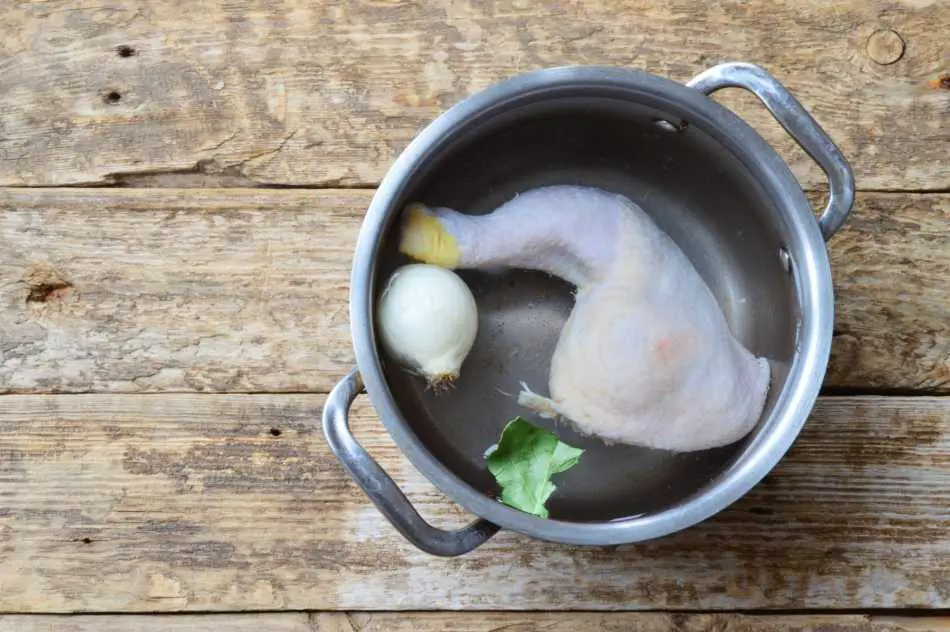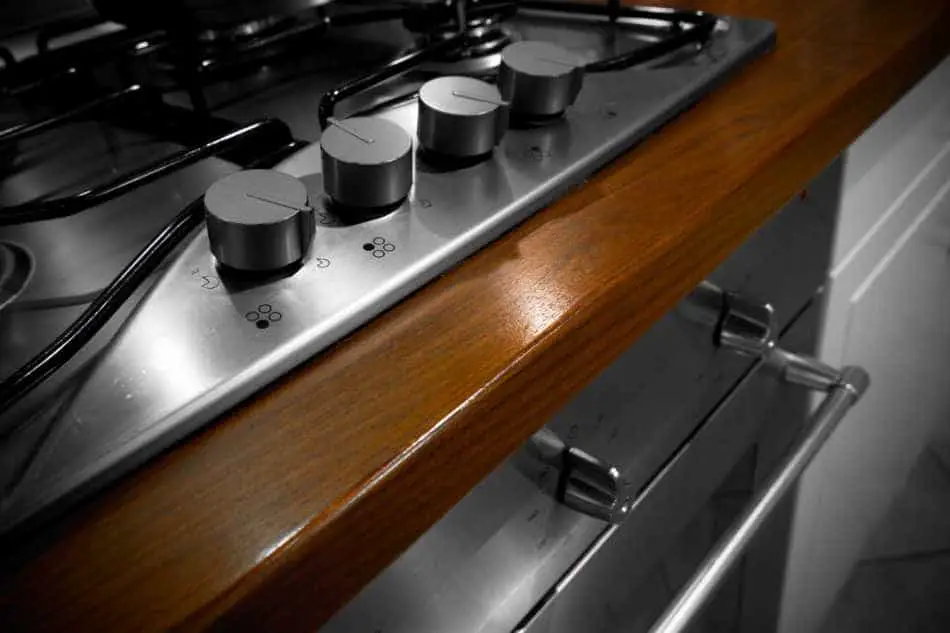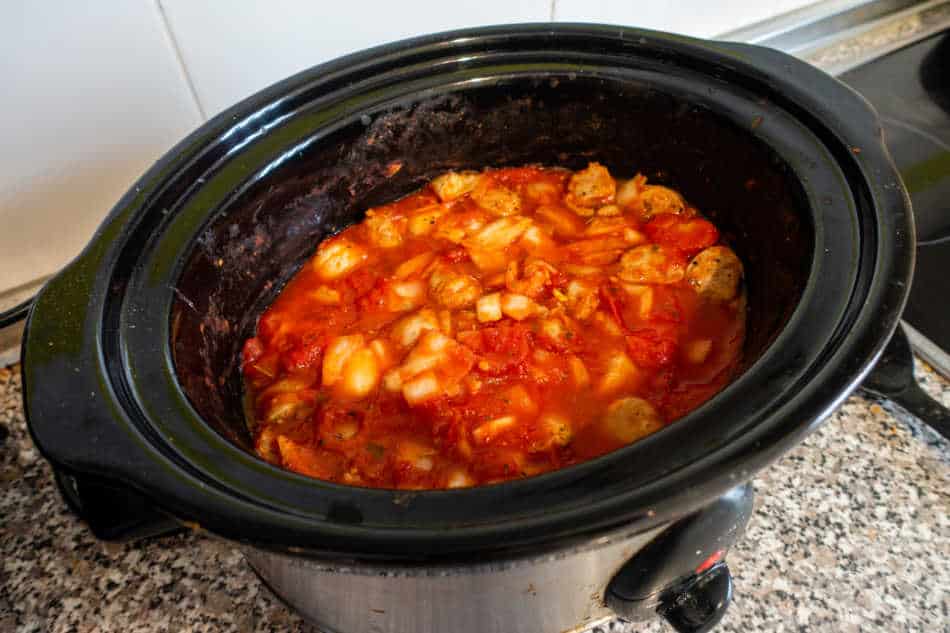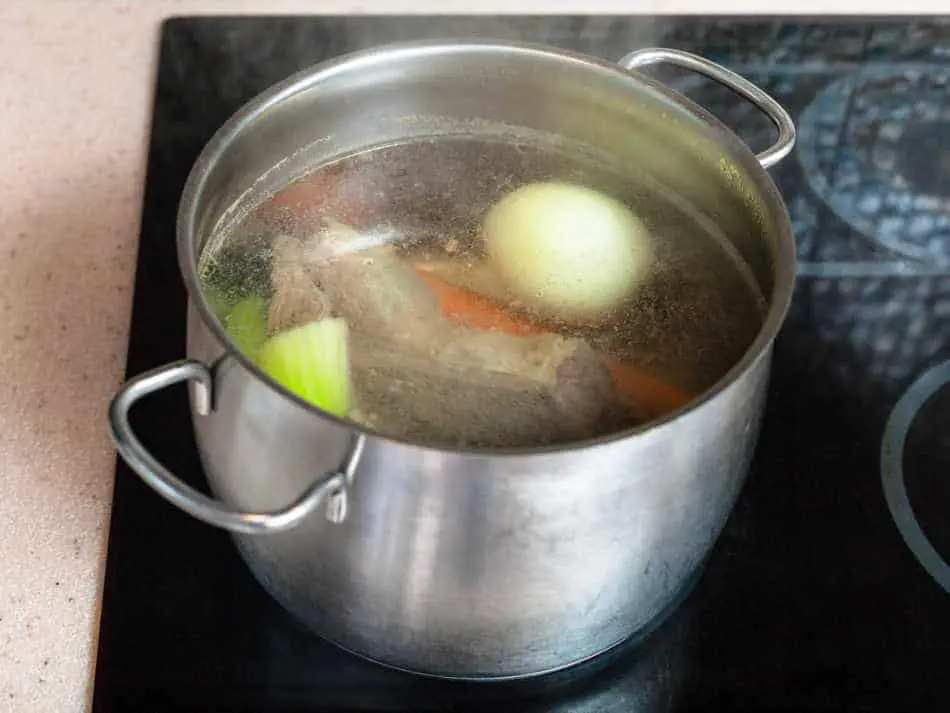Simmering is an important part of cooking, especially when you want to add flavors or incorporate seasonings and ingredients into your dishes. There are many other reasons you may need to simmer your dishes, including avoiding boiling over and spilling on the kitchen floor. Unfortunately, when using a stove, you may run into a situation where you need an emergency simmer when cooking, and if you do not know the actual number that is appropriate to simmer, chances are your food may get overcooked or start boiling aggressively.
So, what number is a simmer on a stove? The number that is simmer on a stove is 4 for a stove that is numbered to nine on its dials. You must bring your food items to a boil first and then slowly increase the number setting starting from four until the correct simmer level is achieved.
According to Maytag, a leading stove manufacturer, simmer cooking involves using moderate heat to soften foods while gently adding seasonings and ingredients. The manufacturers also note that a simmer should be below the boiling point (212 °F) and range between 185°F to 205°F.
Best Foods that Require Simmering
| Best Foods for Simmering | Simmer Time Required |
|---|---|
| Spiced Cider (recipe) | 5 minutes |
| Champurrado (recipe) | 20 minutes |
| Chicken Mole (recipe) | 5 minutes |
| Icelandic Cocoa Soup (recipe) | 5 minutes |
| Chili Verde (recipe) | 1 hour |
| Fish Stock (recipe) | 30 minutes |
How to Set the Perfect Number to Simmer on an Electric Stove
To set the perfect number to simmer on an electric stove, you will need to adjust it just below the boiling temperature and not too low to reach the poach level. In a stove numbered 1-9, consider setting it between 3 and 4.
Mastering the art of cooking requires in-depth knowledge of how much heat to apply. In fact, most cooking methods, such as boiling, frying, simmering, and even poaching, are partly distinguished by how much heat goes into the cooking.

| Level of Heat for a Stove | Dial Setting (9-digit stove) |
|---|---|
| Low | 1-3 |
| Medium | 4-6 |
| High | 7-9 |
Fortunately, in this chapter, we will cover one of the main cooking methods, simmering, and we will take you through the ins and outs of setting the right temperature when using an electric stove.
Chances are, if you are a food enthusiast who likes reading or watching recipes, you have heard the commonly used phrase, “bring to simmer,” instruction. Fortunately, simmering is not a complicated topic. Every time you hear a simmer in relation to cooking, it is another way of saying the food should be cooked in medium-low heat for a given amount of time.
Therefore, when you read a recipe about bringing your dish to simmer, it means your food should be in a hot liquid at a temperature that allows the liquid to heat just below the boiling point and not too low to be considered a poaching temperature.

A simmer will require you to bring your food to a temperature of between 180 degrees to 205 degrees F. To maintain a steady simmer, there is a high likelihood that you will first require boiling your dish and then slowly adjust your electric stove to a temperature that is just below the boiling point of your dish.
Now comes the most complicated part: ( not as easy as can you transport a stove on its back ) setting the perfect number on your electric stove for a simmer. If you are lucky and have an electric stove with the simmer label, then it is as easy as turning it to that level.
Unfortunately, most electric stoves do not have that option, and therefore you must adjust manually. For starters, your electric stove adjustment knob will have numbers ranging from 1-9, with 1 being the lowest temperature and 9 being the highest temperature.
To adjust to the perfect temperature, we first must eliminate the extremes such as 1 and 2, which are low in temperature, and 8 and 9, which will take your dish to a boil. It is sensible to assume that the medium number 5 may be the perfect temperature for simmering. However, that is the medium heat, and there is a high likelihood that you are looking for medium-low heat to simmer your dish.
This leaves us with 3 and 4, representing medium-low heat. Therefore, for a perfect simmer, consider setting your electric stove to a 3 or 4 setting.
What is the best temperature to simmer at?
The best temperature to simmer is between 180 degrees to 205 degrees Fahrenheit. This temperature is just below boiling and is not too cold for poaching.
When preparing a dish, it is important to know what the perfect simmer temperature for your dish is. For instance, different methods of preparing food, including poaching, boiling, and simmering, require different temperatures.
| Simmer Level | Characteristic | Temperature |
|---|---|---|
| Low | tiny bubbles | 185 |
| Regular | tiny streams of bubbles | 195 |
| Rapid | streams of bubbles | 205 |
Typically, when a recipe calls for you to simmer, they mean that your dish should be operating at a temperature that is just below the boiling point but hotter enough to allow tiny bubbles at the bottom of the pan to rise and not too low to result in poaching.
Therefore, the best temperature to simmer is slightly below the boiling temperature. For context, water boils at 212 degrees F. So, if you want to simmer, your temperature should range from 180 degrees to 205 degrees F.

To maintain that temperature, you will need to keenly observe your food and ensure that only tiny bubbles are at the bottom of the pan, the steam is rising, and your water is not at a boiling level and aggressively forming huge bubbles.
Double Burner Hotplates that work well when simmering and that are portable
| Hot Plate | Watts |
|---|---|
| Cuismax 1800 | 1800 |
| Techwood | 1800 |
| Ovente | 1700 |
| Vayepro | 1500 |
| Giveneu | 1800 |
| Elite | 1800 |
How to Simmer on a Gas Stove that does not have numbers on the dials?
To simmer on a gas stove that does not have numbers on the dials, you should use trial and error until you pinpoint the correct temperature for a simmer.
Knowing how to simmer using a gas stove that does not have numbers on the dial is a skill by itself. This is because looking at the gas stove, there is a high likelihood that you will not be able to make out at what level you need to move the adjustment knob that will ensure that you are cooking the foot at the right temperatures. I recommend that you use CSK nonstick pot for simmering on a gas stove that is available on Amazon. Click here to have yours delivered.
Unfortunately, to simmer on such a stove, you will need to achieve the simmering result through trial and error. You will first need to adjust temperatures to a temperature that can boil your dish. Then after bringing it to a boil, reduce the heat until it is just below the boiling temperature, and leave your dishes to simmer.
However, in cases where, despite your gas stove not having numbers on dials, it has the low and maximum temperatures displayed, consider moving the adjusting knob to be slightly left of the center for a clockwise knob. This will help you pinpoint the temperature that is hot enough for simmer, not cold enough for poaching, and not too hot enough for a boil.
How to Prevent a Sauce from Burning at the Bottom when Simmering
To prevent your sauce from burning at the bottom when simmering, consider turning down the heat further, stirring the sauce, covering the sauce when simmering, and not overdoing the simmering.
Burning your sauce when simmering can be frustrating. Fortunately, the steps involved in preventing your sauce from burning are quite simple:

- Start by coating the bottom of your pan with olive oil before you start using it to cook your onions, garlic, etc.
- If the sauce has onions, they should go first in the pan. You also should avoid caramelizing them. Instead, leave them to just sweat before adding other source ingredients. Note that, if you caramelize your onions, that’s when the sticking begins, leading to your sauce getting burned.
- If your sauce needs garlic, then this is the step where you need to add it. If you let your garlic get brown against the bottom of your pan, then there is a high likelihood that your sauce will burn during simmering. So, you will need to add your garlic, cook for about a minute and then add your sauce products such as tomato, etc.
After following the above steps, you may notice that your sauce still gets stuck at the bottom and burns during simmering. In such cases, consider following the steps below.
- Turning down the heat; There is a high likelihood that the temperature you are using for simmering is too high. For instance, using a medium-high or medium temperature can result in your sauce getting burned. Therefore, it is recommended you adjust the temperature to medium-low temperature.
- Stir things regularly: if you notice that you regularly burn your sauce, stirring it while cooking can help prevent the burn.
- Cover the pot when Simmering: Covering the cooking pan can help cook things faster before they start to burn. It also traps steam and heat inside to speed up the simmering.
How to Set the Correct Temperature on an electric Stove that has dials that number 1-6
To set up the correct temperature on an electric stove with dials that number 1 to 6, you should consider adjusting it to a temperature just below the boiling point. In most electric stoves, that temperature will be between 2 and 3.
Setting the correct temperature on your electric stove can determine how well your food will cook. For instance, it requires different temperatures to cook, simmer or poach. In most cases, you will find that the electric stove’s adjustment knob can be adjusted by numbers ranging from 1 to 9.
However, despite being the standard for most electric stoves, it is not always the case, and in some cases, you may find yourself in a situation where your stove only has numbers between 1 to 6. In such cases, below are a number of things you should consider when adjusting for the temperature. I recommend the Nutrichef 15 Quart for medium level simmering that is available on Amazon. Click here to have yours delivered.
- Temperature number 1 is the lowest temperature on the stove, while 6 represents the maximum temperature on the stove.
- When the adjustment knob is between 3 and 4, then the temperature is regarded as being at the medium.
- If the knob reads 2, then your electric microwave is operating on the medium-low temperature setting.
- If the knob reads 5, then the temperature is operating on the medium-high temperature setting.
By following the above steps, we can say that, depending on what you are doing, setting a temperature at levels 5 and 6 will cause your food to burn or boil. At levels 3 and 4, there is a high likelihood that the dish will start to simmer and, depending on the model, boil at level 4. At level 2 is when your dish starts to poach and at level 1, the temperature may be too cold to cook a meal swiftly.
What number is best for simmering When Using your BBQ Like a Stove
BBQ grills, regardless of whether they are electric, charcoal, or gas-fueled, can be an efficient method of cooking your dishes. In some cases, you may even opt to use your BBQ grill as an alternative to grill. In such cases, how to simmer or control the simmering process becomes important. This section will examine how you can use BBQ as a stove simmer. Our focus will be the Gas/electric grills and the charcoal BBQ grills.
- Gas/ Electric grills
Barring some differences, the gas or electric grills will work almost the same way when controlling the heat used for your dishes. In both types of BBQ, you will find that they will come installed with a control knob that regulates the temperature. Depending on the gas/electric BBQ grill model, your BBQ grills will either have numbers or high and max indicators on the knobs, where you can adjust the temperature.

If you are looking to simmer using your gas or electric grills, you will need to adjust the knob to be just below the medium temperature setting. In most cases, this temperature will also be just below the boiling point temperature, and therefore, allowing you to simmer.
Unfortunately, in some cases, your BBQ grills may lack adjusting knobs. In such cases, you will need to compromise and find an alternative for the knobs should you decide to use BBQ grills as stoves for simmering.
- Charcoal BBQ grills
Charcoal BBQ grills remain some of the most widely used types of grills in existence. Like other BBQ grills, they can also prepare other dishes, including simmering. However, charcoal BBQs require some skill to control the temperature unlike other grills. Fortunately, if you follow the steps below, you can be able to simmer using your charcoal BBQ grills.
- Build a two-zone fire: In a BBQ grill, you can control the temperature of your simmer by creating two fire zones, one that is hot and one that is cooler. During simmering, you can adjust your pan from high-temperature to low-temperature zones, which can help you maintain a simmer.
- Adjusting your grill vents to control airflow: When using a charcoal grill, more airflow means a hotter grill, and less airflow means cooling. Therefore, knowing how to adjust the airflow to a level that simulates your dish can help you to simmer it.
- Adjusting the distance between your dish and the charcoal: When using a BBQ, one of the best ways to control the temperature is by adjusting the grill up and down to increase or reduce the distance between the dish to the fire. The same method can also be applied when using a BBQ charcoal grill as a stove when simmering. You can adjust the distance between the dish you are simmering to the fire, by doing this, you will be able to maintain a temperature that is within the range of simmering.
- Using Grill shield: Aluminum foil can go a long way in acting as a shield when using a BBQ grill to prepare a dish. You can also use the same method when simmering, which protects your food from exposure to excessive heat.

